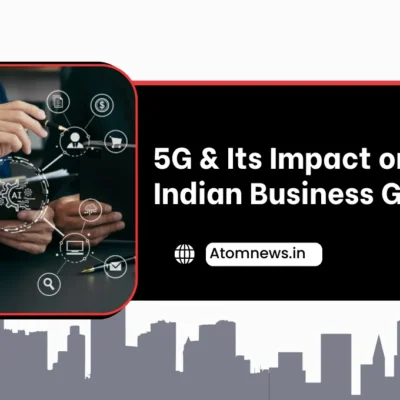At TechSparks 2024, held in Bengaluru, CoinDCX Co-founder and CEO Sumit Gupta shared his insights on the transformative potential of blockchain technology for public infrastructure. According to Gupta, blockchain has the necessary attributes to build robust citizen-facing systems, making it an ideal tool for digital public services. He emphasized that the technology’s inherent transparency and decentralized nature could revolutionize governance frameworks, particularly in India, which is uniquely positioned to take advantage of these innovations.
Blockchain: A Governance Framework at Its Core
In a fireside chat with Sharat Chandra, Founder of EmpowerEdge Ventures, Gupta explained that blockchain is more than just a technological innovation; it is essentially a governance framework. He highlighted how the technology offers transparency, security, and decentralization—key elements needed to build public infrastructure that directly engages with citizens.
“At the core of it, blockchain is basically a governance framework,” said Gupta. This statement underscores the fact that blockchain’s attributes, such as immutability and decentralization, make it a perfect candidate for digital public infrastructure (DPI), where trust and transparency are paramount.
India’s Unique Position in Blockchain Development
Gupta believes India is in a prime position to leverage blockchain technology, primarily due to its vast talent pool of developers already working on public blockchain infrastructure. He noted that while many countries use the internet to provide services for international companies, India has the opportunity to become a producer of blockchain tools and infrastructure. These innovations could serve not only India but also local businesses and international markets, creating a significant growth opportunity.
“So like the internet, where we largely provide services to international companies, here we can be the producers of a lot of these tools and infrastructure, which can be used not only by India but also globally,” Gupta said. He stressed that India could emerge as a leader in the blockchain space, offering solutions that transcend borders.
Challenges in Blockchain Adoption
Despite its immense potential, blockchain adoption faces several hurdles, particularly in terms of user experience. Gupta pointed out that a single blockchain transaction requires multiple steps—about 5 to 6, where multiple signatures are needed. This complexity makes it difficult for average users to interact with blockchain-based applications.
“A single transaction on a blockchain essentially takes 5-6 steps where multiple signing is required. That, I believe, is a complex user experience right now that we are sitting in,” Gupta remarked. He added that for blockchain technology to be widely adopted in consumer-facing apps, the complexities need to be abstracted away, making the user experience as simple as interacting with platforms like Amazon, Uber, or Facebook.
Gupta emphasized that users should not have to deal with the intricacies of blockchain technology when using applications. The technology should function in the background, seamlessly delivering the benefits without complicating the user’s experience. This user-friendly approach is crucial for the widespread adoption of blockchain-based applications, even though there are significant financial incentives for developing such platforms.
Compliance: The Key to Blockchain’s Success
Another critical factor in building blockchain-based infrastructure is compliance. Gupta pointed out that when a new industry or category emerges, compliance often takes a backseat, which can lead to regulatory concerns and misuse by bad actors. He believes that adhering to compliance standards is essential to gaining the trust of regulators and the broader industry.
“When the category is new, when the industry is new, people are not really focused on that, but we are of the opinion that compliance will give comfort to the regulators, the larger industry, and limit bad actors from using any of this,” Gupta said.
Gupta’s comments reflect a growing sentiment in the blockchain space that regulatory compliance will play a crucial role in the technology’s long-term success. By ensuring transparency and adherence to regulations, blockchain can gain wider acceptance among governments and industries, paving the way for broader adoption in public infrastructure and other sectors.
The Future of Blockchain in India
India’s blockchain ecosystem is on the cusp of significant growth, with government interest in digital public infrastructure and the rising talent pool in blockchain development. Sumit Gupta’s insights at TechSparks 2024 offer a glimpse into the future of blockchain in India, where the technology could become a key enabler of governance, financial services, and digital infrastructure.
Blockchain’s attributes—transparency, security, and decentralization—make it an ideal framework for building citizen-facing applications. However, simplifying the user experience and ensuring regulatory compliance are critical steps in ensuring that blockchain technology reaches its full potential.
Read more: Marketing News, Advertising News, PR and Finance News, Digital News





